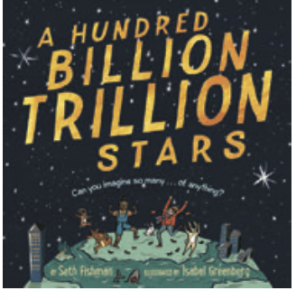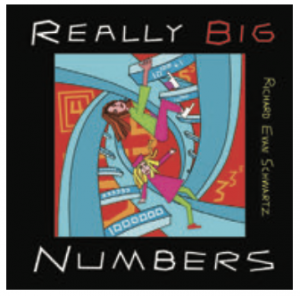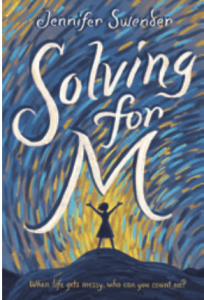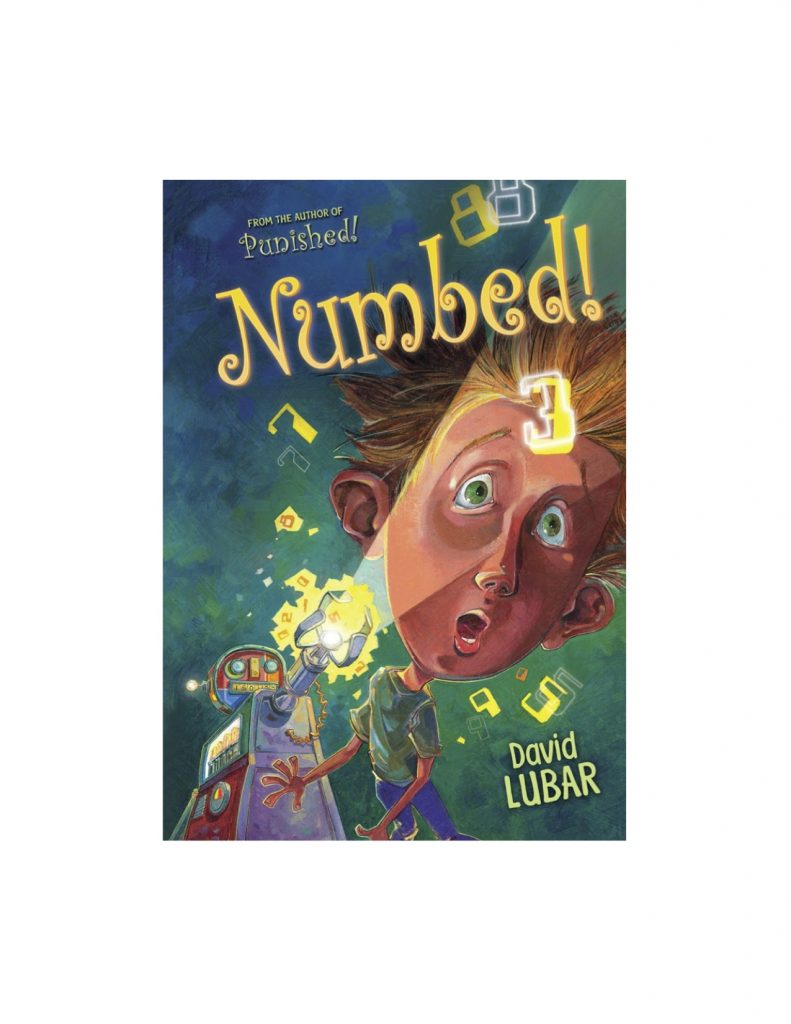Horrors! Benedict and Logan are zapped by a math-loving robot while in a math museum! The boys find themselves unable to use math — to pay for items, to figure out what time it is, or to use directions in the museum. The boys find themselves in a race against time to solve math problems in order to get their skills back.
Numbed! by David Lubar is laced with humor, math puzzles and beat-the-clock suspense which appeals to elementary (and even middle school) students. This is just one of many books awarded the Honor Book distinction by Mathical Books.
Sharing books laced with a math theme and humor helps kids relate to everyday math and build number sense along the way. Books allow readers to ‘play’ with math too. Math is more than numbers, formulas and equations!
The Mathical Book Prize is an annual award for fiction and nonfiction books that inspire children of all ages to see math in the world around them. Mathical titles are promoted nationally among librarians, K-12 teachers, parents, mathematicians, early childhood educators and science museums.
This blog post is the second of four highlighting quality mathematical literature for children. The books featured in this post are of interest to elementary aged children (grades 3 – 5). Future blog posts will feature literature for middle school and high school students.
A poster of winning and honor books for Grades 3 – 5 can be accessed at mathicalbooks.org
Do you have a favorite math-themed book? Share it with us!
Six Award-Winning Books for Elementary Aged Children featuring Math
Bedtime Math: This Time It’s Personal by Laura Overdeck (Grades 3 – 5)
Many generations of Americans are uncomfortable with math and numbers, and too often we hear the phrase, “I’m just not good at math!” For decades, this attitude has trickled down from parents to their kids, and we now have a culture that finds math dry, intimidating, and just not cool. Bedtime Math wants to change all that. Inside this book, families will find fun, mischief-making math problems to tackle―math that isn’t just kid-friendly, but actually kid-appealing!

A Hundred Billion Trillion Stars by Seth Fishman (Grades 3 – 5)
Did you know that the earth is covered in three trillion trees? And that seven billion people weigh about the same as ten quadrillion ants? Our world is full of constantly changing numbers, from a hundred billion trillion stars in space to thirty-seven billion rabbits on Earth. Can you imagine that many of anything? Here is a book for story time, for science time, for math time, for bedtime, and all the times in between!
Which One Doesn’t Belong? by Christopher Danielson (Grades 2 – 6)
Every colorful page of Christopher Danielson’s children’s picture book, Which One Doesn’t Belong?, contains a thoughtfully designed set of four shapes. Each of the shapes can be a correct answer to the question “Which one doesn’t belong?” Because all their answers are right answers, students naturally shift their focus to justifications and arguments based on the shapes’ geometric properties. Which One Doesn’t Belong? is a book of conversation starters around geometry!
Really Big Numbers by Richard Evan Schwartz (Grades 3 – 5)
This is a classic book to which a child can return again and again as she grows older, getting more out of it each time, as larger

and larger numbers and mathematical ideas dance tantalizingly into their grasp. The book begins with small, easily observable numbers before building up to truly gigantic ones, like a nonillion, a tredecillion, a googol, and even ones too huge for names! Really Big Numbers is enthusiastically recommended to every individual interested in exploring the vast universe of numbers!
Blockhead: The Life of Fibonacci by Joseph D’Agnese (Grades 2 – 5)
As a young boy in medieval Italy, Leonardo Fibonacci thought about numbers day and night. He was such a daydreamer that people called him a blockhead. When Leonardo grew up and traveled the world, he was inspired by the numbers used in different countries. Then he realized that many things in nature, from the number of petals on a flower to the spiral of a nautilus shell, seem to follow a certain pattern. The boy who was once teased for being a blockhead had discovered what came to be known as the Fibonacci Sequence!

Solving for M by Jennifer Swender (Grades 4 – 7)
When Mika starts fifth grade at the middle school, her neat life gets messy. Separated from old friends and starting new classes, Mika is far from her comfort zone. And math class is the most confusing of all, especially when her teacher Mr. Vann assigns math journals. Art in math? Who’s ever heard of such a thing? Most scenes occur either in math class or at home, each centered around basic pre-algebraic concepts: order of operations, estimation, variables, sets and other mathematical topics.

